In a few short weeks, we will be chasing our tails trying to keep up with the explosion of growth. Enjoy this month of relative calm, but not before you’ve powered up with my top 10 gardening jobs, including a deceptively simple way to stop weeds in their tracks before they’ve even had a chance to get started.
Cast your mind back to last month when we started forcing this crown of rhubarb under here. There we go, actually, the buds have really fattened out and are really coming along, I think. Obviously, that extra warmth is making all the difference. I’ll pop this back, but I reckon we’ll be good to harvest in 6 to 8 weeks.
Potting Up Strawberries
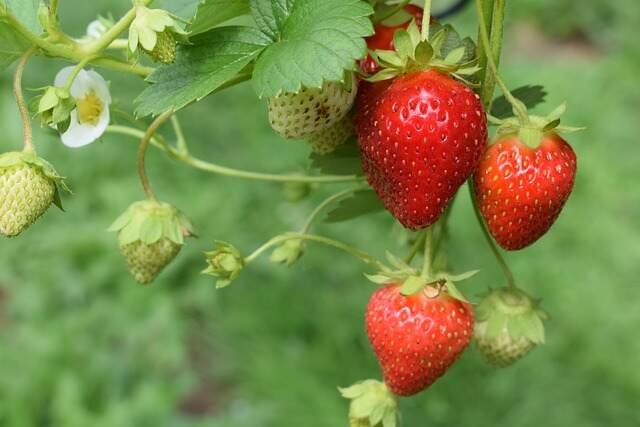
Just like my rhubarb, I can enjoy an early crop of strawberries. This time, I don’t need to cover them to make them dark; I just need to bring them into somewhere warmer, like a cold frame or, in my case, a greenhouse. These guys have already been outside all winter long, so they’ve had a really good period of chilling, which is important to help them initiate flower production and, of course, those fruits. They need that chilling period.
So, I’m just going to tidy them up and then pot them up individually into fresh potting mix just to give them a bit of a boost. I’m going to be using a soil-based potting mix for these strawberries. It just has more body to it, and because strawberries are perennials, I think they’ll prefer this mix. I’m just going to add a little bit of extra nutrition with a handful of blood, fish, and bone, and just stir it all in like this.
Now, when the plants start flowering, I will apply a liquid tomato feed. Tomato feeds are higher in potassium, which will encourage more flowers and obviously help with fruit production. In this protected environment, it’s going to be a lot warmer than outside, so I would expect these guys to start flowering sometime around mid-spring, and they may well fruit before spring is even finished. I can always move them back outside once they are done.
At that time of year, there can be a shortage of pollinators in the air, so what I might do is just tickle the center of each flower with a little artist’s paintbrush to transfer the pollen carefully, just to make up for the lack of bees at that time of year.
Ventilation
If you do decide to try forcing strawberries in this way, plant a strawberry variety that is young. Naturally, you will receive your results much sooner in this manner.
Temperatures and light levels finally begin to rise around the middle of the month. Hurrah! In fact, any protected structure, like a greenhouse or tunnel, can really start to get hot on sunny days. That may result in growth that is soft, fleshy, and leafy. That’s fine, but if the weather turns cold once more, that may suddenly return. Thus, make a point to keep ventilation on par with conceivable by opening up every one of the entryways, vents, and windows to help a decent through progression of air so you don’t get those wild swings in temperature. You can continuously close them around evening time, obviously. A maximum/minimum thermometer can be useful in this situation because it allows you to monitor temperatures and keep an eye out for extremes.
Harvesting

Don’t forget to carry on harvesting winter crops like kale, chard, leeks, and parsnips. Hardy heroes like these will help to keep the kitchen supplied and put a pep in your step at this rather dull time of year. Why not use the likes of leeks and parsnips to create yourself a deliciously warming soup, perfect for warming the cockles after a cold spell out here gardening?
Seedlings
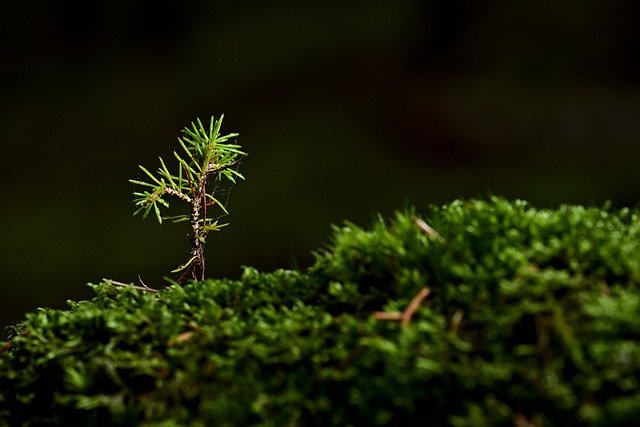
There is one job I enjoy more than any other, I’d say, and that’s transferring seedlings from recent sowings into their own plugs or pots. The gardening term for this is “pricking out,” and if you’re new to gardening and have never done it before, well, please don’t worry, it’s very easy to do, and this is how I do it.
Carefully remove the seedlings from their pot. You can either scoop them up, or if they’re like this, I like to kind of jump them out like that. Oh, there we go, that’s better. Then, you can just use a spoon or, occasionally, a little chopstick to carefully break them apart like this, so you’ve got individual seedlings. Now, with them all separated comes the delicate bit. Always handle the seedling by its leaf, never the delicate stem where it could crush or snap.
This has got a lovely root system already. Make your hole with your chopstick, little stick, or spoon, carefully guide the roots down, and then just gently firm it in like that. I like to do this pricking out while the seedlings are still quite small. That way, there isn’t too large a root system, and it’s easier to guide them into the holes you make. Sometimes the roots hang onto more potting mix like this, and you can just put in a whole clump of soil from the original nursery pot into its new home. So, as I say, do them nice and young; there’s no point waiting until they’re too big.
Mulching
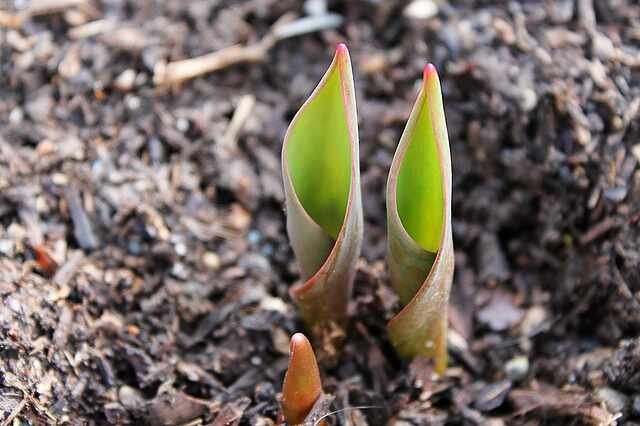
With most of winter over, birds have had plenty of time to peck around and get rid of overwintering grubs that might cause a problem next season, so now is a great time to get on and mulch around fruit bushes, fruit trees, and canes. Mulching with organic matter will help to nourish the soil and, by extension, the fruits growing in it. I’m using part decomposed leaves to mulch around these gooseberry bushes here, but you could use garden compost or something like wood chips—anything that will eventually rot down and feed the soil. Just be careful to keep the very base of the stem clear of your mulch so it doesn’t sit against it and potentially cause problems with rotting.
Oh, there’s my shoe! I’ve been looking for this. We’ve had quite a bit of wind here, and I keep them outside by the back door, and it blew away. I’m glad to have found it.
Now is also a good time to plant fruit trees and bushes, new ones. You can plant them as bare-root plants or container-grown plants. Planting at this time of year gives them a few more weeks to produce roots and settle down into position before the growing season really begins. Most fruit plants like a sunny spot in rich, well-drained soil, and that’ll help them to really thrive. This is my cherry tree, which I planted four years ago, and it’s come on really well since then.
Compost Pit
Normally, I throw my kitchen waste onto the compost heap, but there is another way to make use of it—by burying it underneath where hungry plants like beans and squash family plants will go. Digging what’s called a compost pit is as easy as digging a hole and popping in your organic or kitchen waste. It wants to be about 30 cm or 1 ft deep. You need to put your pits where you’re going to plant your plants, so you’ll need to know that in advance because you want the plant on top of all that organic goodness.
If you’re a bit behind in your garden planning, please do not worry; there’s plenty of time. Why not get yourself started with a free trial of our Garden Planner? I’ll pop details of that down below. You can add your kitchen waste in stages or in one go like this. However you do it, make sure that you cover it up with some soil between fillings to stop local wildlife from showing an interest. Once you’re done, just return all of the soil like that. It will leave a bit of a mound, but that’s absolutely fine. It’ll settle down over the next few months, ready for planting.
If you’re a bit of a birdbrain like me and prone to forget, just thrust in something like a stick so you know where your planting pits are.
Pond
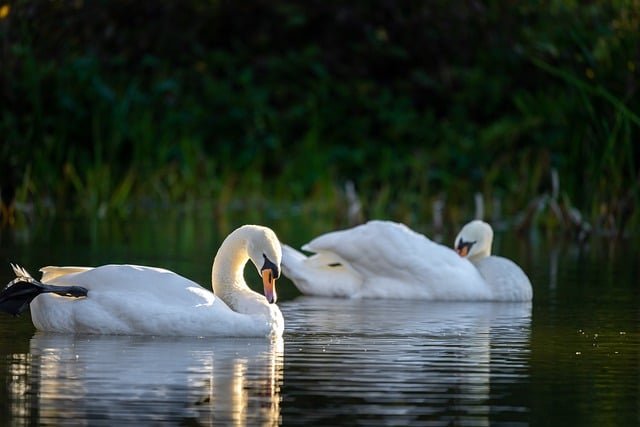
Any body of water like this, no matter how small, will provide valuable habitat for wildlife. I am very lucky to have both frogs and toads in my garden. They really like the slightly longer grass in many areas, and, of course, this pond no doubt helps. In the heat of summer, I can find them lurking in just about any tub of collected rainwater.
This pond is looking a bit forlorn and neglected, so let’s put that right now. The first job is just to pull away some of this grass that’s grown into it from around the sides. That’s looking a bit better now. It’s absolutely clogged with leaves that have fallen. Ideally, I should have maybe covered it during the autumn fall, but never mind, I’m going to remove most of them. There’s a bit of sludge at the bottom, and I’ll keep that because it’s valuable habitat, but I’m getting the rest of these leaves out because if they rot, they’ll create a bit of a stinky, low-oxygen environment. I’m just putting them quite close to the pond so if there is anything in here, it can escape back into the water.
I’ve managed to disturb a frog, so I think I’m going to leave it there. To finish, I’m just going to top up with some collected rainwater here, just to bring it back up to the level. You’ll notice that the sides here have some rocks so that anything that comes in can get back out again and vice versa. It gives an easy in-and-out access ramp to this pond. Later on
in spring, I’m going to get the balance back by planting some more marginal plants around the edge and submerged plants as well to keep the water nice and oxygenated, but it’s great to see there are indeed frogs in there.
Weeds
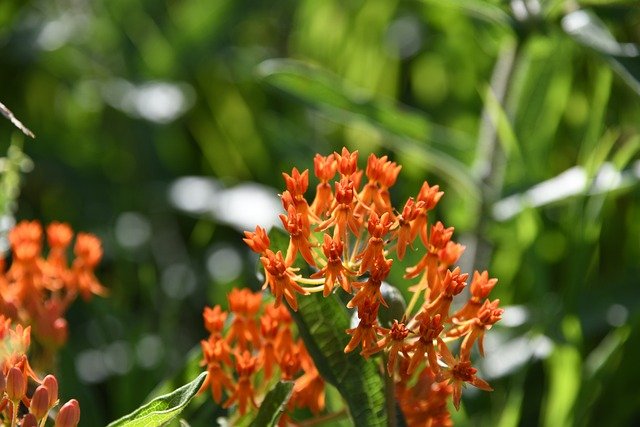
Weeds have a habit of popping up right at the start of the season. In fact, they’re quite a good indicator that spring is pretty much with us. Also, their appearance is a good cue that many cool-season crops can now be sown.
I often find that my garden compost gets a little weedy, and I don’t want little weeds popping up at the same time as my seedlings. One way around this is to jump ahead and get the weeds to germinate before I get sowing. One option to raise the soil temperature is to use some sort of glass pane like this. This has been salvaged from a window, and it’ll raise the soil temperature nicely. Once the weed seedlings have popped up, you can go in with a hoe and just hoe it all off to leave a nice clean seedbed ready for sowing or planting into a week or two later.
Most people don’t have window panes lying around, but perhaps you have something like this clear plastic here. Just anchor it down, and even this will warm the soil enough by 1 or 2 degrees, and that will shunt the whole growing season forward by as much as 2 weeks, giving you that competitive advantage. Once those weeds are up, as I said, just hoe them off, and you’re good to go.
Radish
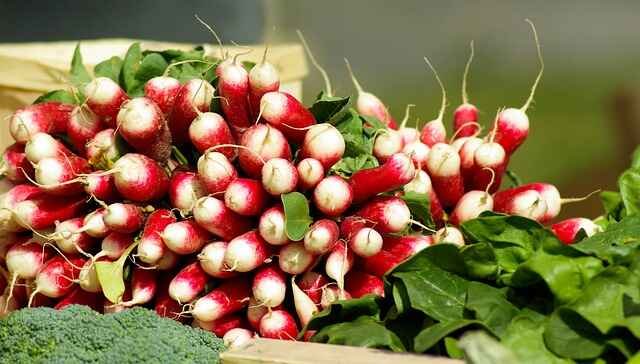
One of the first cool-season crops that can be sown is radish. Radishes are one of the very earliest new-season crops to be harvested, and they’re very hardy as well. They can germinate in temperatures as low as 41 Fahrenheit or 5 degrees Celsius.
Mark out your rows into well-drained soil that has been raked to a fine tilth. I’m going to grow two rows here, spaced about 8 inches or 20 cm apart. To sow them, I take the time to pick up each seed individually and sow it about an inch or 2 cm apart. This does take a little bit of time, but it will save you time later on trying to thin out the seedlings. This way, there’ll be none of that; you can just keep them watered and let them grow on until it’s time to harvest them.
Now, it’s still a bit chilly here, so these could do with a little bit of protection. You could use a low tunnel, for example, or something like this glass pane. I’m going to create a little bit of a sort of box frame here. I’ve got the frame of the bed itself, and if I put this plank here like that, it’s raised slightly the glass above the soil level, and that will trap it in just like a mini greenhouse. Now, it’s not the prettiest thing, but it does work. If I pop it like that, we’ve created a nice little microclimate in here. I’ll remove these glass panes once the seedlings are up, and then they’ll just grow on, and I can harvest them once they reach, well, radish size, which at this time of year should be around 7 to 8 weeks.
Cucumber
They’re great to sow from later on in the month if you’re going to grow them in a greenhouse or you live in a warmer climate. If you don’t, maybe wait until next month. You’ll never guess how many seeds there are in here. Four. But I guess that’s what you get when you pay for a good hybrid variety. Hey, there’s actually five! Bonus! Well, we’re winning, aren’t we? Let’s get them sown.
I’ve got pots here of sieved all-purpose potting mix, and to sow these very expensive seeds, I’m going to sow them on their sides about half an inch or just over 1 cm deep. There we go, and then cover them back over. These will get a nice drink and then go indoors into the warm to germinate. With a combination of sunny windowsills and grow lights, these should grow on nicely, kept well above freezing. Then they’ll come out here later in spring. That should give us a slightly earlier chance to harvest those fruits. These are going to head indoors onto my heat mat. I love growing cucumbers. Once they start, there is really no stopping them, and we will be doing a deep dive into cucumbers later in spring, so do subscribe and turn on notifications so you don’t miss that one.
Gardening makes your soul sing, so keep busy, get your hands dirty, and keep smiling. Happy gardening!



